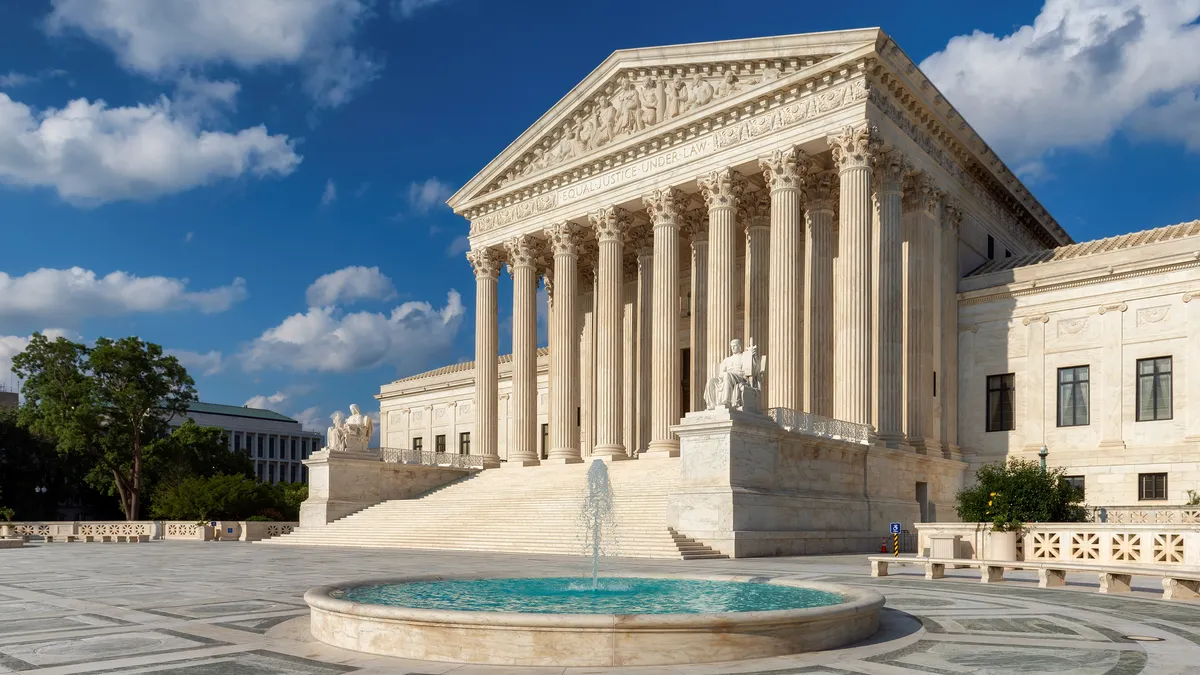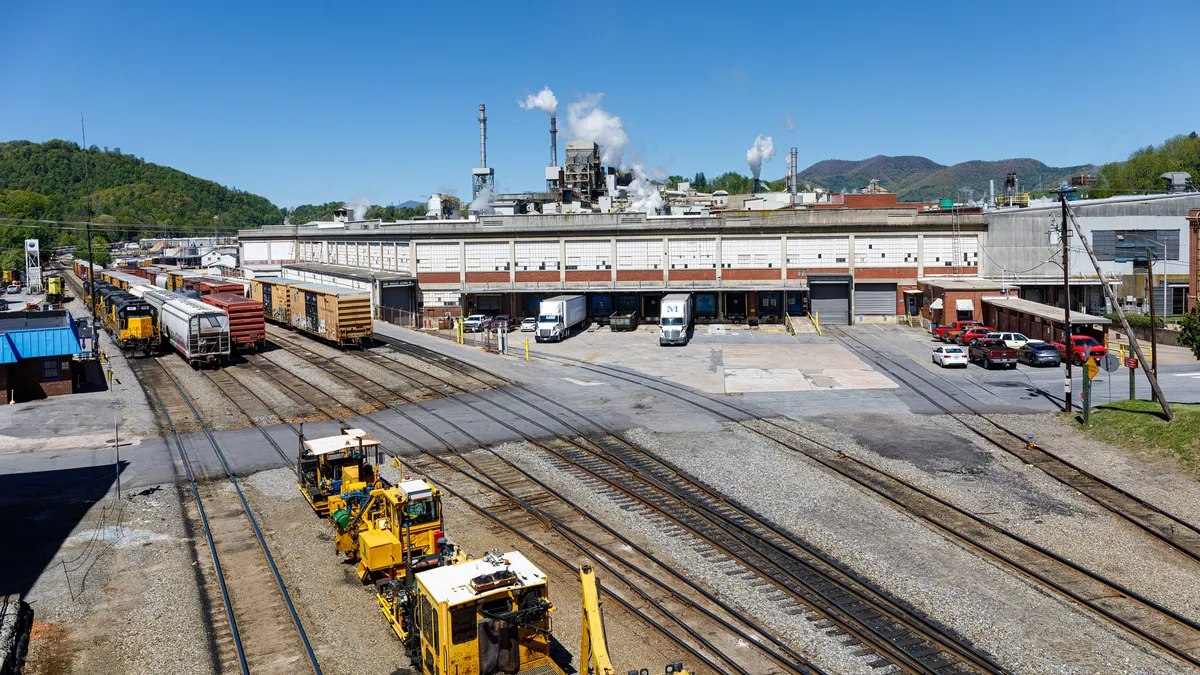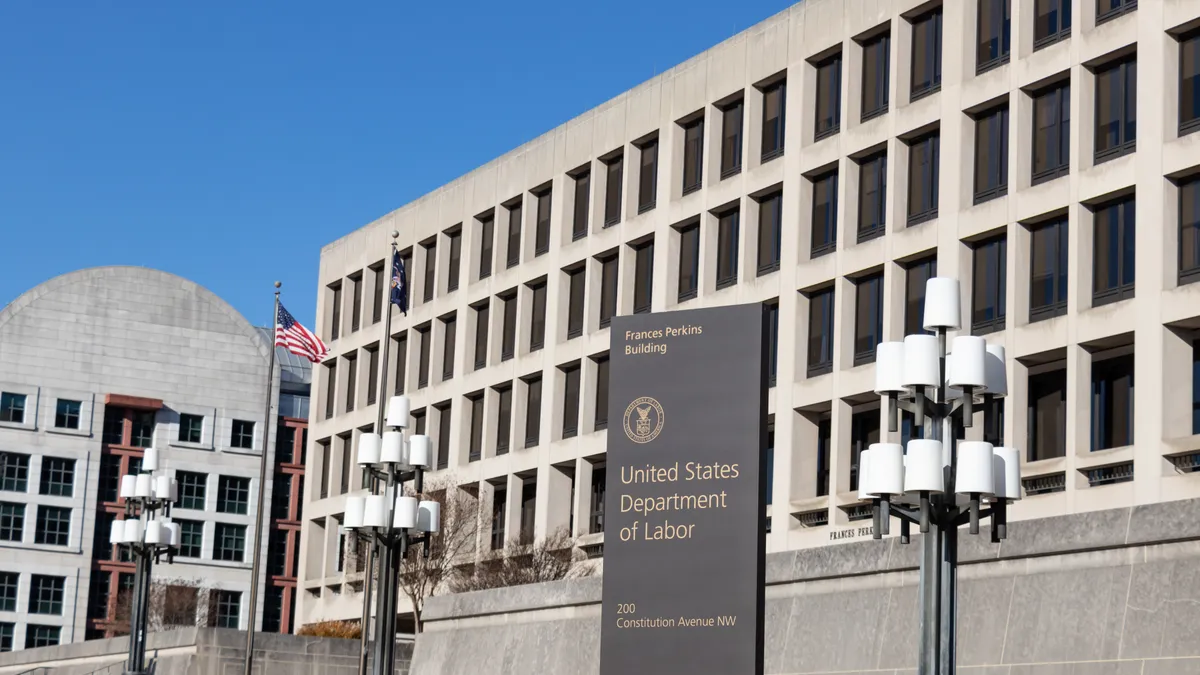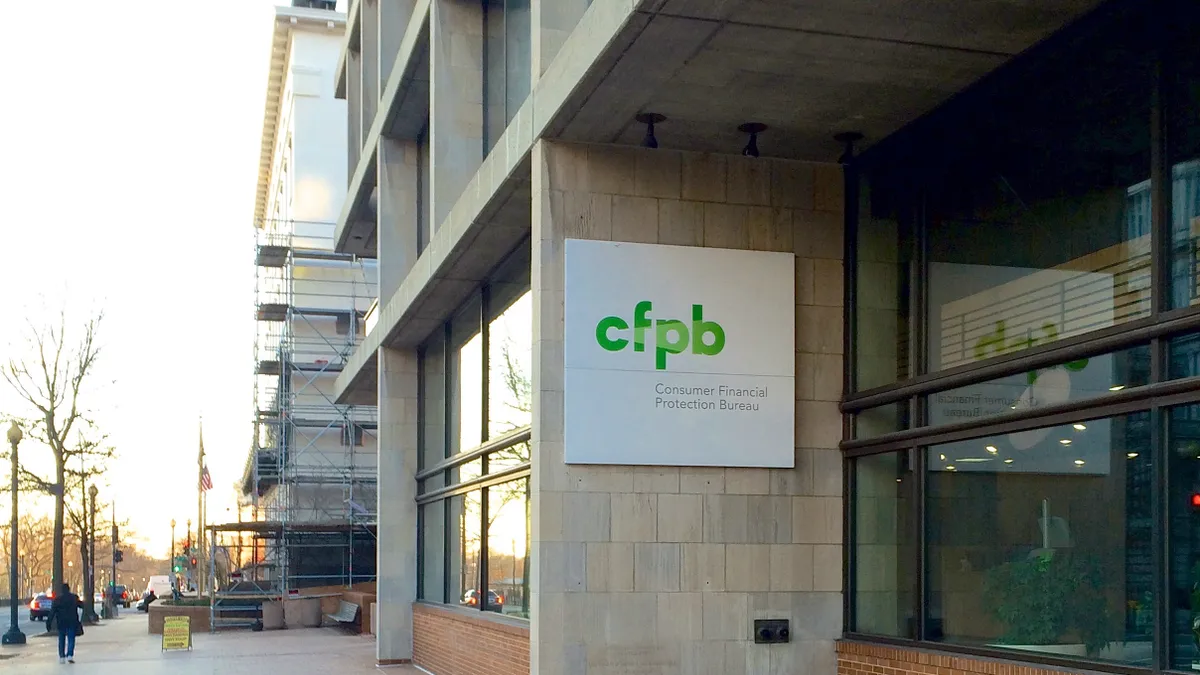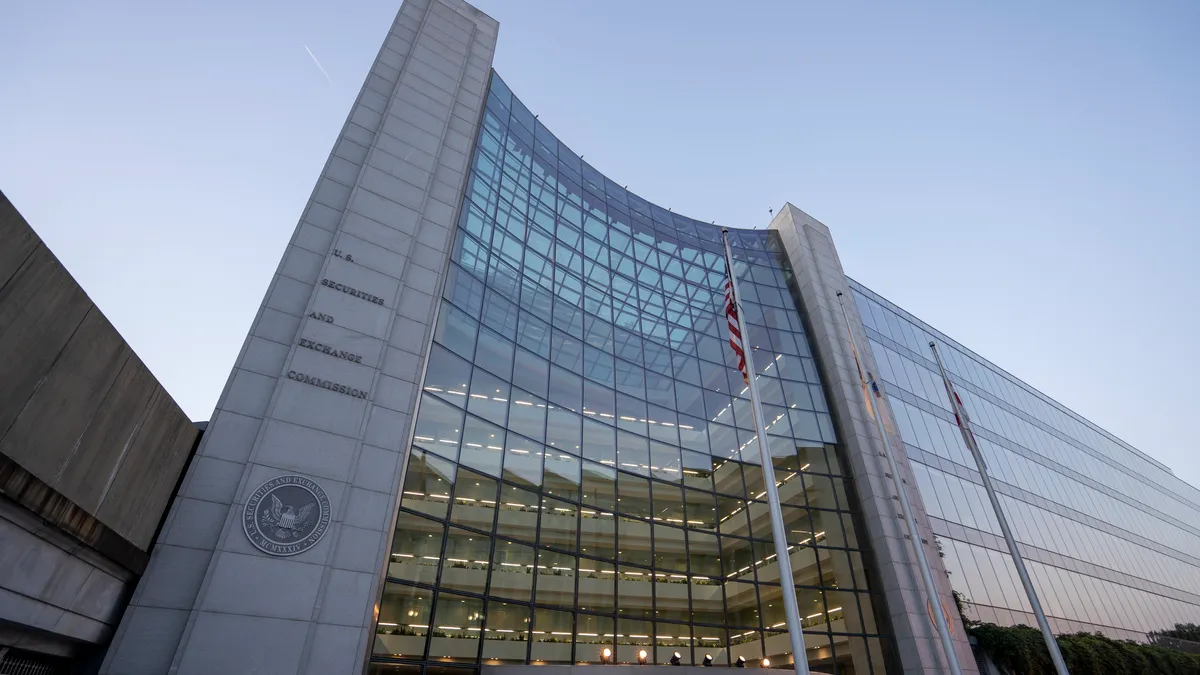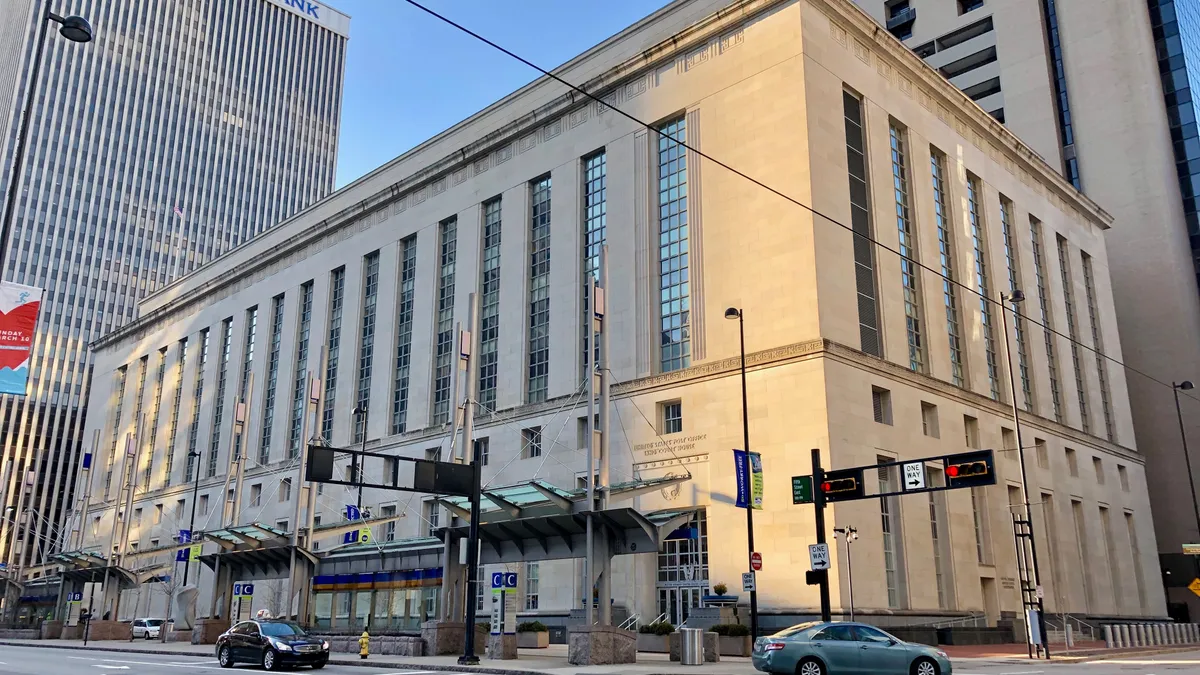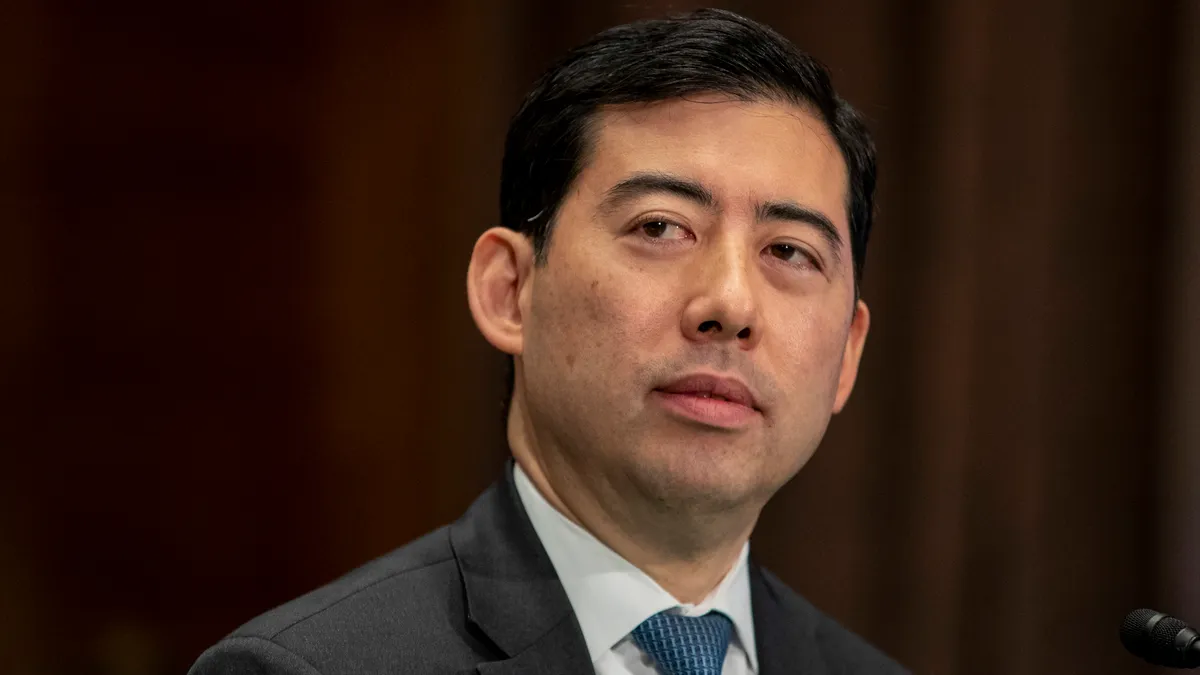The Supreme Court handed down a number of blockbuster rulings at the end of its last term, most notably its constitutional take on presidential immunity in Trump v. U.S. But it was its decisions stripping power from government agencies that put business issues on the front burner for U.S. companies.
In Corner Post, the justices made it significantly easier for businesses to challenge agency regulations.
The Court also struck down the 40-year-old Chevron test that gave deference to a government agency’s expertise when a law is ambiguous, in Loper Bright Enterprises v. Raimondo, while also dealing a blow to the enforcement power of the Securities and Exchange Commission.
As the justices get ready to begin a new term on October 7, Legal Dive sat down with an attorney who regularly practices before the Supreme Court to get his take on the big disputes to watch affecting companies in 2024-2025.
Michael Kimberly co-chairs the Supreme Court and Appellate Practice group at McDermott, Will & Emery and co-directs the Yale Law School Supreme Court clinic. Kimberly has presented more than 40 appellate arguments during his career and will present his ninth argument before the nation’s highest court in January.
Editor’s note: Legal Dive’s conversation with Kimberly has been edited for clarity and length.
LEGAL DIVE: Before we look ahead, that was quite a rebuke the Supreme Court majority gave to administrative agencies last term. Have you wrapped your head around those rulings and what they mean for companies?
MICHAEL KIMBERLY: Any one of them alone would be a big hit to the administrative state, but three in a week [the last week of the Court’s term] is pretty seismic. It was a remarkable shift of power from the executive branch to the judicial branch.

Jarkesy is the most important among them. The SEC routinely brings enforcement actions. I think it’s going to be extraordinarily difficult for agencies to bring cases through the administrative process.
Take the EPA, for instance. It won’t be able to issue fines without a jury trial. One of the other things we’ve seen is the SEC dropping all of its enforcement actions against accountants. It seems the agency may not be interested in further testing the Court now.
With the new term starting in early October, what especially jumps out at you with the cases on the Court’s schedule so far?
What jumps out is what’s not on there. Mercifully, it looks like a pretty quiet term. In my view, that’s a relief. Last year’s term might be a once-in-a-generation term in the way the regulatory state operates.
Half of the docket is queued up, and there aren’t a lot of business or social justice cases on the docket yet but that could change.
Two securities fraud cases, Nvidia v. E. Ohman and Facebook v. Amalgamated Bank, are big deals but involve pretty technical legal issues. [Note: The Supreme Court will hear arguments in both cases one week apart in November.]
Nvidia has to do with whether fraud must be pleaded with particularity about internal company documents. Facebook involves disclosures from past events.
It’s hard to pigeonhole the Court, but my instinct is the justices may be concerned about throwing open the courthouse doors too wide in fraud cases with a ruling for the plaintiffs in Amalgamated Bank. So, a pro-defense ruling strikes me as more likely.
Are there any cases that you think will move the needle that in-house counsel should be watching?
Any in-house counsel ought to be looking pretty closely at Nvidia and Facebook. One other case that caught my eye is Royal Canin v. Wullschleger. It’s a case about removal. Can a plaintiff amend a complaint to send a case back to state court?
This may be one of the most important issues facing counsel at large companies. The first question they will ask when sued in state court is, can we get this to federal court? State courts generally are more plaintiff-friendly, have lower thresholds to discovery and are more freewheeling on damages. For lawyers representing companies it’s super important to get cases into federal court.
The Supreme Court has a couple of environmental cases on its schedule already. How big of an impact will those disputes have on businesses?
Both are very significant for environmental regulation, especially Seven County Infrastructure Coalition v. Eagle County. That case involves NEPA [the National Environmental Policy Act], which has become a very important tool for obstruction by the NIMBY [not in my backyard] contingent.
The Trump administration made a huge change in 2020 when it sought to limit NEPA review to proximate cause and effect. Other groups have said you had to consider every downstream environmental effect, which gives endless hooks for groups that are anti-development to slow things down.
The Trump standard lasted just 18 months because the Biden administration reversed it. The Court would have deferred 15 or 20 years ago, but not any more. They are looking to make it more difficult for agencies to reverse course from administration to administration. Businesses need clear answers and predictability.
The Court typically fills out its spring schedule on the fly as issues arise. Are there any issues affecting companies in the lower courts that the justices may want to add to their schedule?
The first category is post-election cases. They could be very distracting and suck up the Court’s time and attention. We all hope that doesn’t happen.
The second category we’re more likely to see are cases following up Loper Bright and Jarkesy. There are questions being litigated right now and it wouldn’t be surprising to see circuit splits over what the Supreme Court meant in those rulings.
Some folks may press the outer limits with Loper Bright, and these are such sea-changing decisions that the Court may want to give guidance sooner rather than later.
Tell us about what you’re involved with before the Court.
I have a case, Hewitt v. U.S., that will be heard involving the First Step Act of 2018 affecting criminal defendants. Basically, the question is whether our client is entitled to a more favorable standard on resentencing.
There is another case where we’ve petitioned for review, Bowers & Kubota v. Department of Labor, involving employee stock ownership plans and whether plaintiffs are entitled to fees if the government brings a losing enforcement action and its position is not substantially justified. It’s part of the broader anti-administrative state theme.
What’s it like bringing a case before the Supreme Court, and how has that changed over the course of your career?
During the pandemic, oral arguments really changed with the justices being remote and those changes have continued since they returned. With oral arguments post-pandemic, you get to speak for two minutes uninterrupted so you really get to set the table for your argument. Also, all nine justices get a turn to ask questions by seniority and that’s led to a more respectful atmosphere instead of having so many interruptions.
As a result, the arguments are longer now. It used to be each side had a half hour and when the red light went on, that was it. An oral argument now could be an hour-and-a-half or up to two hours depending on the case.


